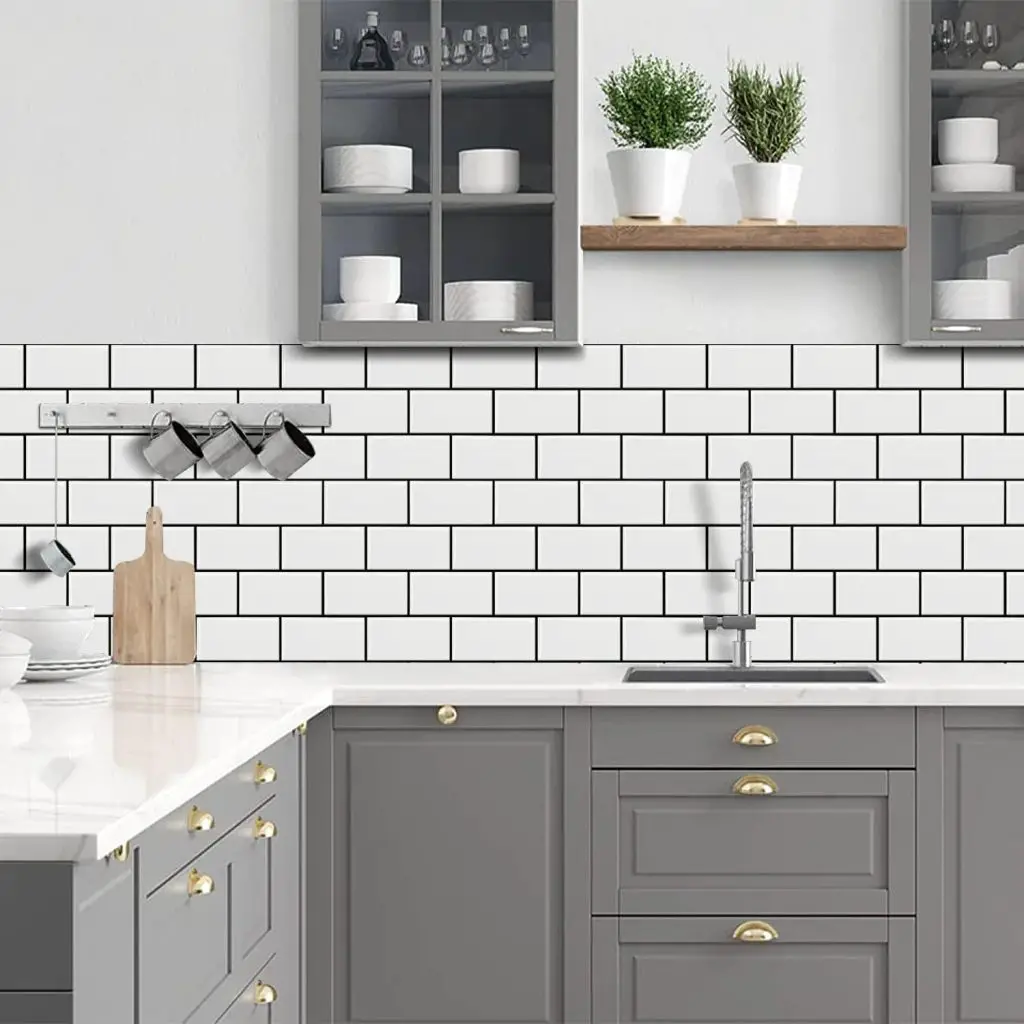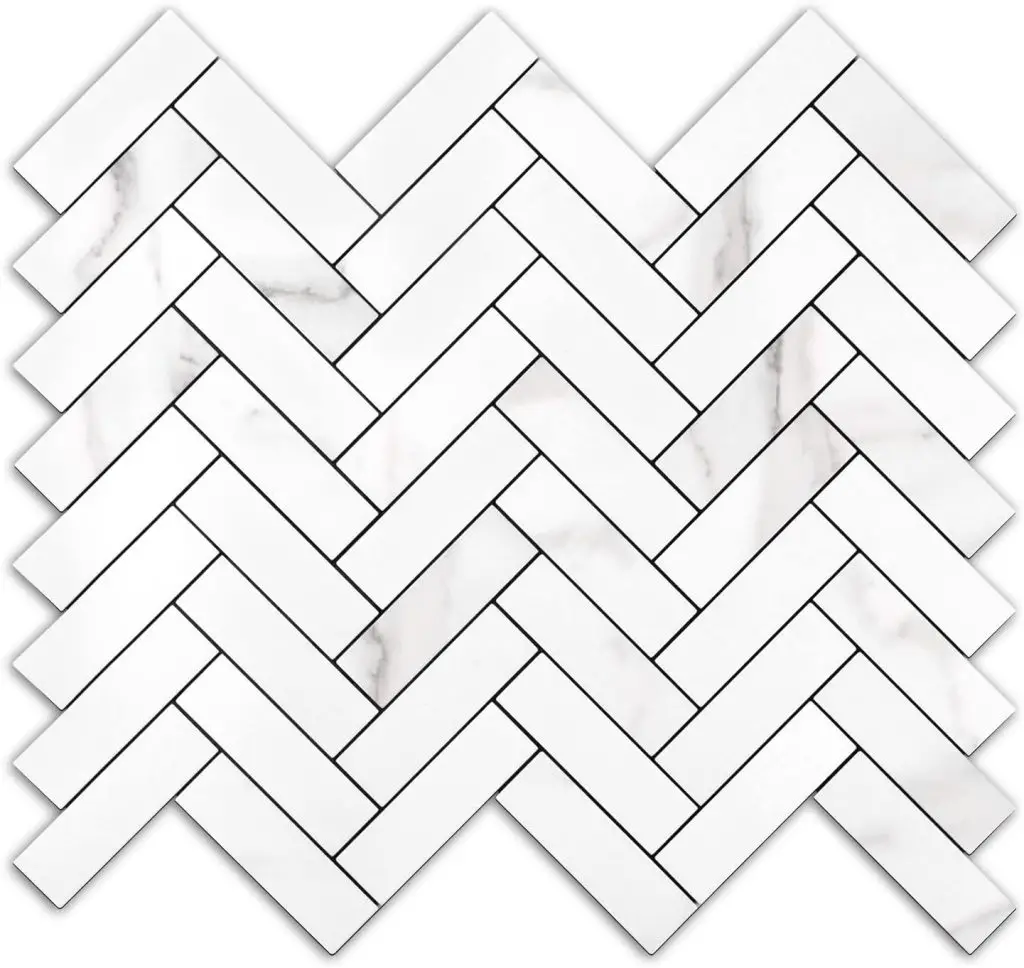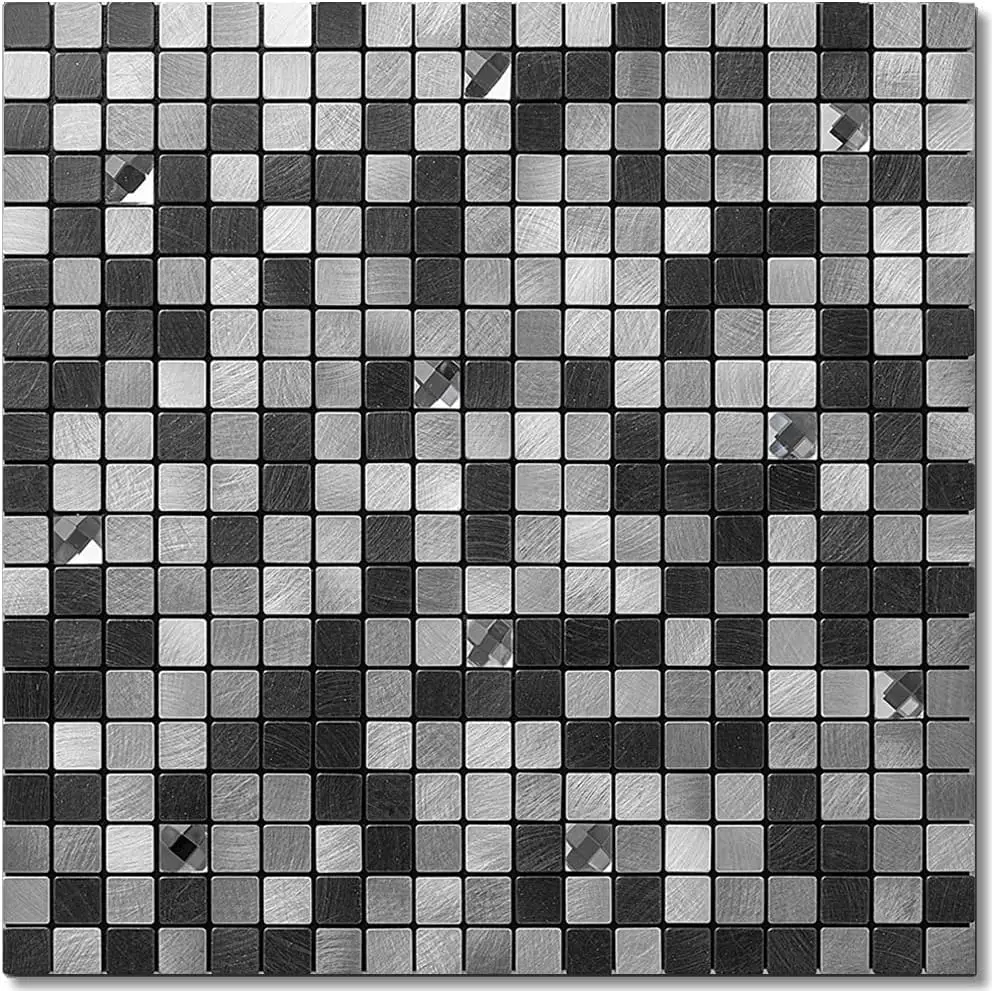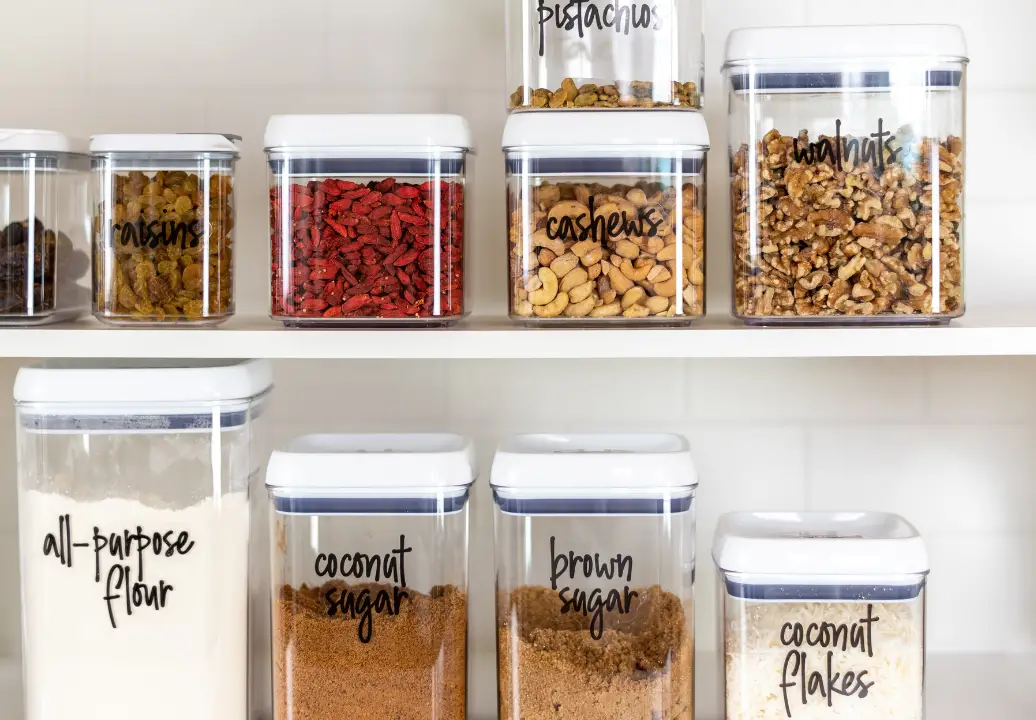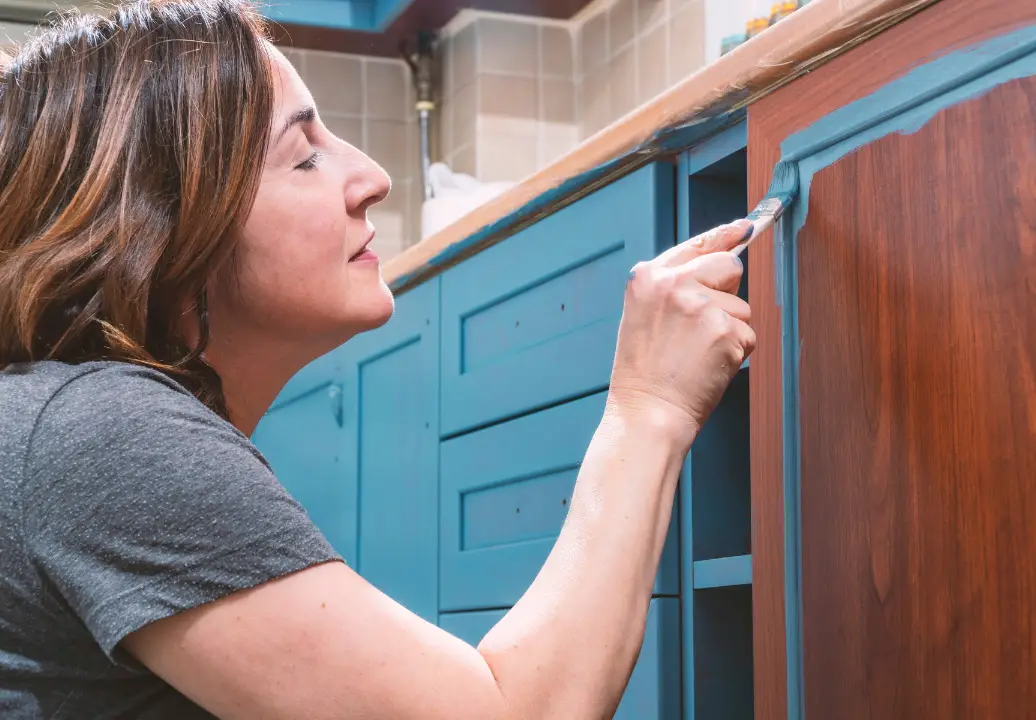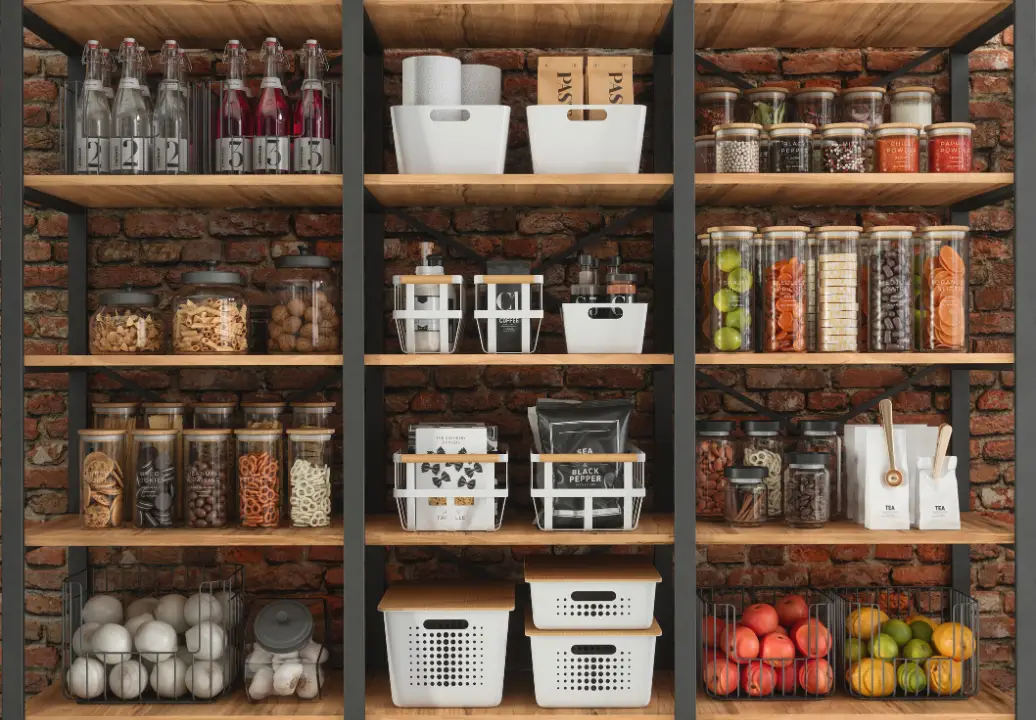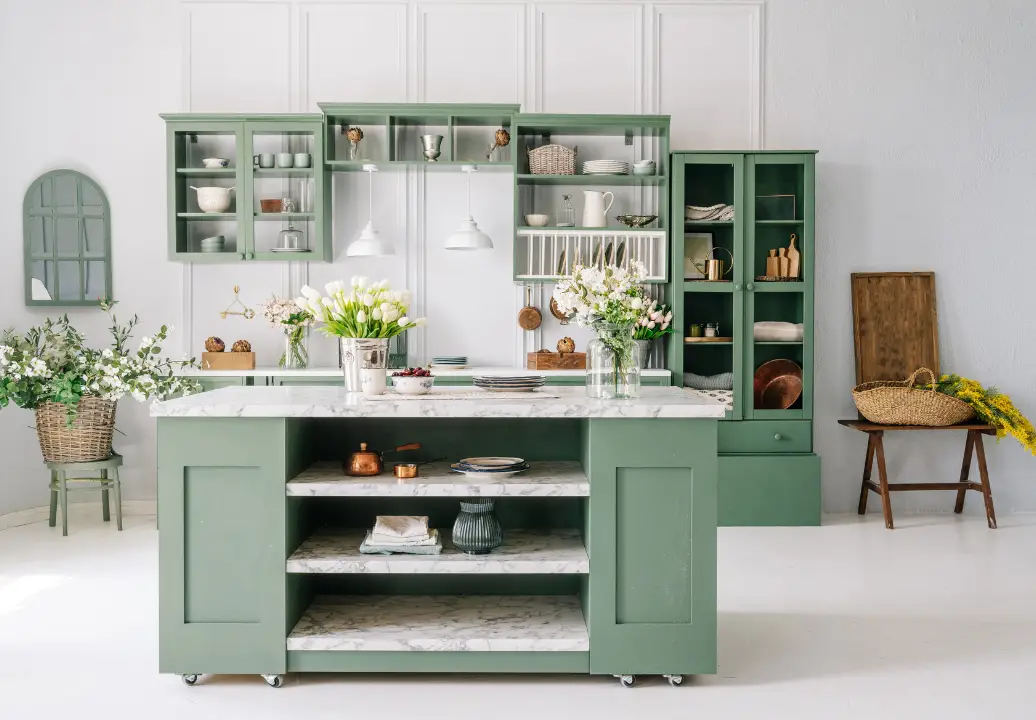How to Update Your Kitchen Backsplash
If you’re searching for ways to update your kitchen, especially on a budget, updating or adding a kitchen backsplash may be just what you’re space needs! From intricately detailed tiles to natural stone, there are so many options for a DIY kitchen backsplash update to make your space feel more like you. Whether you’re dreaming of a minimalist look or art deco appeal, there’s a stylish kitchen backsplash for everyone’s taste. Let’s take a look at your options, how to select the ideal look, and what you’re in for with a DIY backsplash makeover.
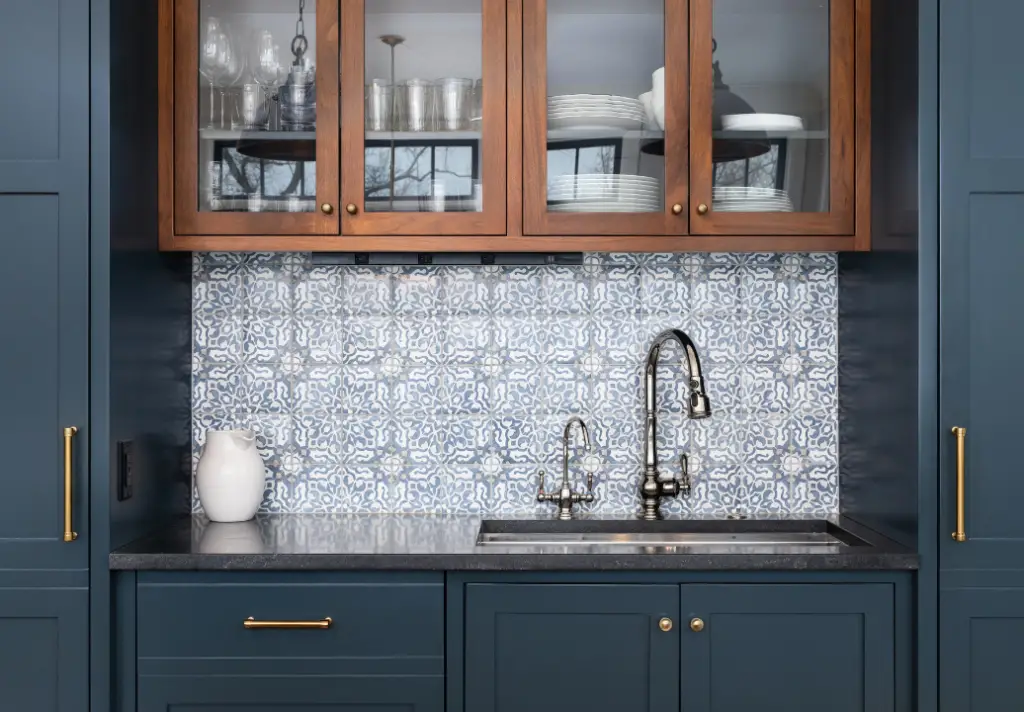
Contents
What is a Kitchen Backsplash?
A kitchen backsplash is a protective wall covering that is installed behind a stove or counter to prevent water, grease, and food from splattering onto the wall while providing a decorative touch. It’s typically made of materials that are easy to clean and maintain, such as tile or glass. Kitchen backsplashes also add color, texture, and pattern to your kitchen and can open up smaller spaces.
When choosing a kitchen backsplash, it’s important to consider the style of your space and the overall design aesthetic. There are many different backsplash ideas to choose from, ranging from classic subway tile to bold geometric patterns. Some popular backsplash materials include:
- Tile: Tile is a classic choice for a kitchen backsplash, offering a wide range of colors, shapes, and sizes. It’s durable, easy to clean, and can be customized to fit any design style.
- Stone: Natural stone, such as marble or granite, can add a luxurious and elegant touch to any kitchen. Although it’s durable and heat-resistant, it may require more maintenance than other materials.
- Glass: Glass backsplashes are sleek and modern, and can be customized with different colors and patterns. They’re easy to clean and can reflect light, making even the smallest kitchen feel brighter and more spacious.
- Metal: Metal backsplashes, such as stainless steel or copper, can add an industrial or rustic touch to your kitchen. They’re extremely durable and easy to clean, but may show fingerprints and smudges more easily.
If you decide to go the DIY route to update your kitchen backsplash backsplash, it’s important to consider the size and layout of the kitchen, as well as your budget and the type of material being used before getting started. Familiarizing yourself with the ins and outs of the job will also help ensure that the backsplash is properly installed and sealed to prevent water damage.
Overall, a kitchen backsplash is both a functional and decorative element that can bring tremendous change to your kitchen without breaking the bank. With so many backsplash ideas to choose from, it should be quite easy to find a style that fits any design aesthetic and budget.
Choosing the Right Materials
When it comes to choosing the right materials to update your kitchen backsplash, there are several options available. Each material has its own unique characteristics, advantages, and disadvantages. As you weigh all your options, don’t forget to consider budget, style preferences, and possible maintenance requirements. Here are some of the most popular materials used for kitchen backsplashes:
- Tile
- Natural Stone
- Metal
- Recycled materials
Tile Options
Tiles are a classic choice for kitchen backsplashes. They come in a variety of materials, including ceramic, porcelain, glass, and natural stone. Ceramic and porcelain tiles are durable, easy to clean, and come in a wide range of colors and patterns. Glass tiles are also easy to clean and can add a modern touch to any kitchen. Natural stone tiles, such as granite and marble, can add a luxurious feel to the kitchen, but they require more maintenance than other tile options.
Natural Stones
Natural stone backsplashes, such as marble, granite, and travertine, are a popular choice for homeowners who want to add a touch of elegance to their kitchens. These stones come in a variety of colors and patterns, and each stone is unique. However, natural stone backsplashes require more maintenance than other materials, and they can be more expensive.
Metal Choices
Metal backsplashes are becoming increasingly popular in modern kitchens. Stainless steel, copper, and brass are popular choices for metal backsplashes. Metal backsplashes are durable, easy to clean, and can add a sleek, modern look to any kitchen. However, metal backsplashes can be expensive, and they can scratch easily.
Recycled Materials
Recycled materials, such as glass and engineered stone, are a popular choice for eco-conscious homeowners. Recycled glass tiles are available in a variety of colors and patterns and can add a unique touch to any kitchen. Engineered stone, made from recycled materials, is a durable and low-maintenance option for kitchen backsplashes.
How to Make Your Color and Design Choices
When it comes to kitchen backsplash ideas, color and design are two of the most important considerations. The backsplash is a great opportunity to add a pop of color or pattern to an otherwise neutral kitchen, or to tie together different design elements in the space. Here are some key things to consider when choosing a backsplash color and design.
Color Considerations
One of the first decisions to make when choosing your backsplash is whether to go with a colorful or neutral option. A colorful backsplash can add energy and a pop of your personality to the kitchen, while a neutral backsplash can help create a calming, cohesive look. Some popular color combination options include blue, green, and pink, while solid color or monochromatic backsplashes are great for a more streamlined look. Ultimately, the choice of color will depend on personal style and the overall aesthetic you’re going for.
Designing a Backsplash with Patterns
Another way to add interest to a kitchen backsplash is through the use of patterns. A patterned backsplash can be a great way to tie together different design elements in the kitchen, such as the countertops and cabinets. Some popular pattern options include subway tile, herringbone, and chevron. When choosing a pattern, it’s important to consider the scale of the pattern in relation to the size of the kitchen. A large pattern can overwhelm a small kitchen, while a small pattern may get lost in a larger space.
Choosing a Focal Point in Your Kitchen
Finally, consider using the backsplash as a focal point in the kitchen. This can be achieved through the use of a bold color or pattern, or by creating a unique design element such as a mosaic or mural. A focal point backsplash can help draw the eye and create a sense of visual interest in the space. When choosing a focal point, it’s important to ensure that it complements the overall design of the kitchen and doesn’t overwhelm the space.
Our Favorite Kitchen Backsplash Ideas
When it comes to kitchen backsplash ideas, there are so many styles to choose from. Here are some of our favorites that can give your kitchen a unique and stylish look.
Subway Tile Backsplash
Subway tile backsplashes are a classic and timeless choice for any kitchen. They’re versatile and come in a variety of colors and finishes, making them easy to match with any kitchen decor. Subway tiles are rectangular in shape and can be arranged in a variety of patterns, such as the classic running bond pattern or the herringbone pattern.
Herringbone Pattern Backsplash
The herringbone pattern is a popular choice for kitchen backsplashes. It adds a modern and sophisticated look to any kitchen. The pattern is created by laying rectangular tiles at a 45-degree angle to create a zigzag pattern. Herringbone backsplash patterns can be created using any type of tile, including ceramic, glass, or natural stone.
Modern Mosaic Backsplash
Mosaic backsplashes are a great way to add color and texture to your kitchen. They are made up of small pieces of tile arranged in a pattern or design. Modern mosaic backsplashes can be made from a variety of materials, such as glass, metal, or stone. They are available in a variety of colors and finishes, making it easy to find one that matches your kitchen decor.
Statement Backsplash
A statement backsplash is a bold and eye-catching choice for any kitchen. It can be made from a variety of materials, such as brightly colored glass tiles, patterned ceramic tiles, or even wallpaper. A statement backsplash can add personality and style to your kitchen, making it a focal point of the room.
Peel-and-Stick Kitchen Backsplash
Peel-and-stick kitchen backsplashes are a great option for those who want to update their kitchen quickly and easily. They are available in a variety of colors and patterns, and can be easily installed without the need for professional help. Peel-and-stick backsplashes are also easy to remove, making them a great choice for renters or those who like to change up their decor frequently.
Incorporating the Backsplash with Kitchen Elements
When designing a kitchen, it is important to consider how the backsplash will complement other elements in the space. Here are some tips for incorporating backsplash with different kitchen elements.
Countertops and Backsplash
The countertop and backsplash are two of the most prominent features in a kitchen. When selecting a backsplash, it is important to consider the material and color of the countertop. For example, a white subway tile backsplash pairs well with a black granite countertop, while a colorful mosaic backsplash can add interest to a plain white countertop.
To create a cohesive look, consider using the same material for both the countertop and backsplash. This is especially effective with natural stone materials such as marble or granite. Another option is to choose a backsplash that complements the countertop without matching it exactly. For example, a gray quartz countertop can be paired with a blue glass tile backsplash.
Cabinets and Backsplash
The cabinets and backsplash are also important elements to consider when designing a kitchen. A backsplash can tie together the colors and materials used in the cabinets and countertops. For example, a white subway tile backsplash can complement white cabinets and a black granite countertop.
To create contrast, consider using a backsplash that contrasts with the cabinets. For example, a dark wood cabinet can be paired with a light-colored backsplash such as a white or beige tile. Alternatively, a colorful backsplash can add interest to plain cabinets.
Kitchen Island and Backsplash
The kitchen island is often a focal point in the kitchen and can be used to create a cohesive design. When selecting a backsplash for the kitchen island, consider the material and color of the countertop on the island. For example, a butcher block countertop can be paired with a natural stone backsplash to create a rustic look.
To create contrast, consider using a different material for the island countertop and backsplash. For example, a white marble countertop can be paired with a colorful glass tile backsplash. Alternatively, a neutral backsplash can be used to complement a colorful countertop.
Updating Your Kitchen with Unique Backsplash Materials
If you’re looking to add a unique touch to your kitchen, consider using unconventional materials for your backsplash. Here are a few ideas to get you started:
Brick Veneer Backsplash
Brick veneer is a thin layer of real or faux brick that is applied to a surface. It’s a popular option for creating an industrial or rustic look in a kitchen. Brick veneer is available in a variety of colors and textures, so you can choose one that matches your kitchen’s aesthetic. It’s also durable and easy to clean, making it a practical choice for a backsplash.
Wood Paneling Backsplash
Wood paneling is another option for a unique backsplash. It can add warmth and texture to a kitchen, and it’s available in a variety of finishes, from natural wood to painted. Wood paneling can be installed in a variety of patterns, such as horizontal or vertical planks, or in a herringbone or chevron pattern. It’s important to seal the wood to protect it from moisture and stains.
Reclaimed Wood Backsplash
Reclaimed wood is wood that has been salvaged from old buildings or structures. It’s a sustainable option for a backsplash, and it adds character and history to a kitchen. Reclaimed wood is available in a variety of species and finishes, from rough-hewn to smooth and polished. It can be installed in a variety of patterns, such as a mix of different widths or a random pattern. It’s important to clean and seal reclaimed wood to protect it from moisture and stains.
Overall, using unique materials for a kitchen backsplash can add character and style to your kitchen. When choosing a material, consider its durability, maintenance requirements, and how it will complement your kitchen’s design.
Maintaining Your Backsplash
A kitchen backsplash is an important part of any kitchen renovation. It not only protects the walls behind your stove and sink from splatters and stains, but it also adds a decorative touch to your kitchen. However, it’s important to maintain your backsplash to keep it looking its best.
Cleaning Your Backsplash
One of the easiest ways to maintain your backsplash is to clean it regularly. You can use a soft cloth or sponge and a mild detergent to wipe down your backsplash. Avoid using harsh chemicals or abrasive cleaners, as they can damage the surface of your backsplash.
If you have a tile backsplash, you can also use a toothbrush to clean the grout lines. Be sure to rinse your backsplash thoroughly with water to remove any soap residue.
Staining
Staining can be a concern for some types of backsplash materials, such as natural stone or porous tiles. If you notice a stain on your backsplash, it’s important to act quickly to prevent it from setting in.
For oil-based stains, such as cooking oil or grease, you can use a mixture of baking soda and water to create a paste. Apply the paste to the stain and let it sit for a few minutes before wiping it away with a damp cloth.
For wine or tomato sauce stains, you can use a mixture of hydrogen peroxide and baking soda. Apply the mixture to the stain and let it sit for a few minutes before wiping it away with a damp cloth.
Splatters
Splatters can be a common issue with kitchen backsplashes, especially those located behind the stove. To prevent splatters from staining your backsplash, you can use a splatter screen while cooking.
If you do get a splatter on your backsplash, be sure to clean it up as soon as possible. You can use a soft cloth or sponge and a mild detergent to wipe away the splatter. If the splatter has dried, you can use a plastic scraper to gently remove it before cleaning the area with a soft cloth or sponge.
By following these simple maintenance tips, you can keep your kitchen backsplash looking its best for years to come.
You’ve soaked in everything you should consider to update your kitchen backsplash and are ready to start the fun part. Choose your ideal backsplash and create the kitchen you’ve always wanted!
